How might we redefine human–vehicle interaction beyond screens and buttons?
Experience Design — Automotive
We explored new ways for vehicles to communicate with people in and around them — without adding new devices or screens.
Through light, motion, and sensor behavior, we investigated how subtle environmental cues can create awareness, anticipation, and trust in shared spaces.
Spatial UX • Interaction Modeling • Prototyping & Testing
Experience Designer — 6 months

Context
Designing spatial awareness
Modern vehicles are surrounded by increasingly complex sensor systems, yet their communication with drivers and bystanders remains limited.
The challenge was to explore how existing sensors and light sources could form a new interaction language — one that enhances awareness and connection rather than adding cognitive load.
Our goal was not to build new interfaces but to orchestrate subtle, ambient exchanges between human and machine.
Approach
Mapping interaction zones
We visualized the spatial zones where human and vehicle perception overlap.
Each zone represents a distinct layer of awareness — from immediate proximity to distant anticipation.
The framework became a tool for thinking about attention, safety, and empathy across scales of interaction.
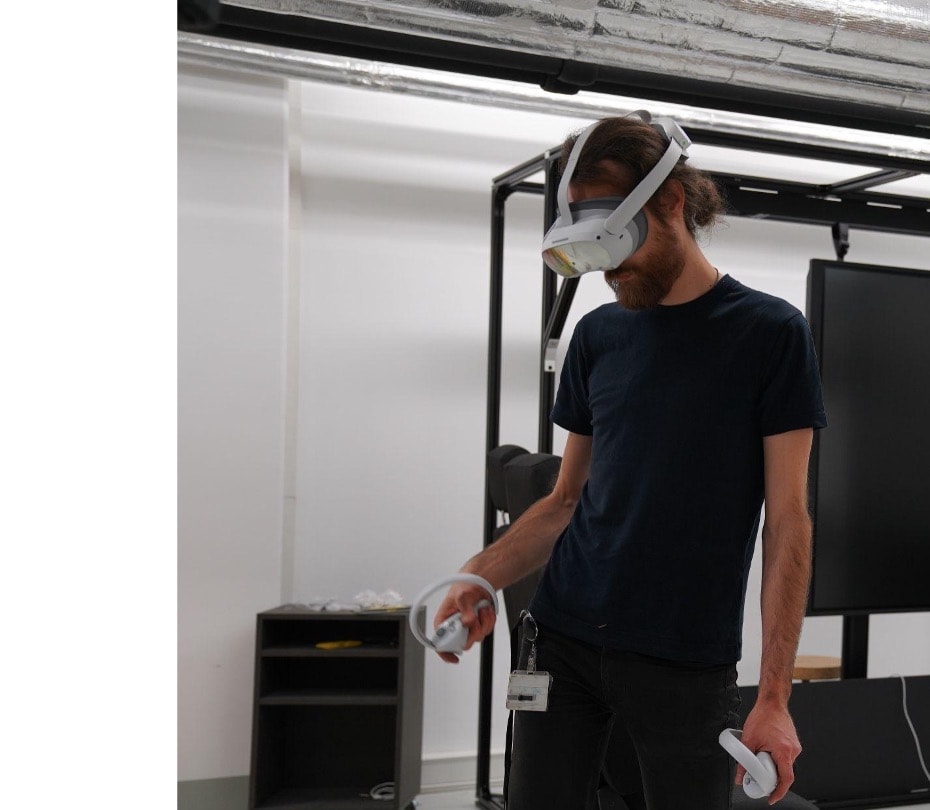
Prototyping
Designing, simulating, and testing at scale
Our exploration combined conceptual system mapping with large-scale prototyping inside a secure innovation environment.
Working hands-on with full vehicles and functional mock-ups allowed us to test spatial interaction hypotheses under real conditions — light behavior, sensor response, and user perception.
The process was iterative and experimental, bridging digital simulation and physical experience to refine how vehicles communicate through their surroundings.
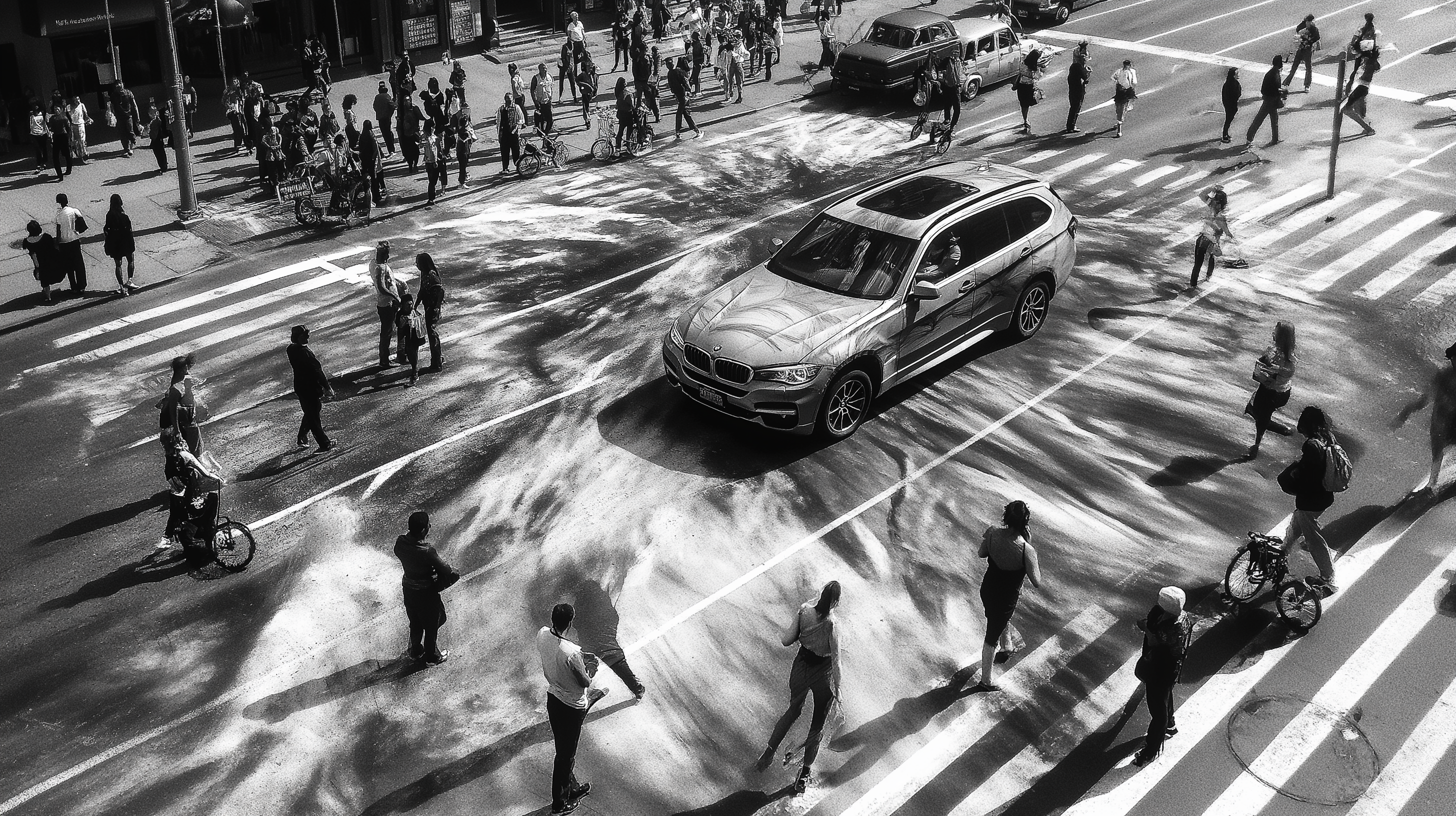
Outcome
From input to intuition
Through rapid prototyping and behavioral simulation, we demonstrated how minimal signals can create intuitive exchanges between human and vehicle.
The framework provided a foundation for designing ambient communication systems — not through screens or voice, but through light, motion, and presence.
The approach shifted focus from control to collaboration, redefining the vehicle as a responsive partner in shared space.
→
previous project
next project
→
© 2025 Lukas Loscher. All rights reserved.
How might we redefine human–vehicle interaction beyond screens and buttons?
Experience Design — Automotive
We explored new ways for vehicles to communicate with people in and around them — without adding new devices or screens.
Through light, motion, and sensor behavior, we investigated how subtle environmental cues can create awareness, anticipation, and trust in shared spaces.
Spatial UX • Interaction Modeling • Prototyping & Testing
Experience Designer — 6 months
Context
Designing spatial awareness
Modern vehicles are surrounded by increasingly complex sensor systems, yet their communication with drivers and bystanders remains limited.
The challenge was to explore how existing sensors and light sources could form a new interaction language — one that enhances awareness and connection rather than adding cognitive load.
Our goal was not to build new interfaces but to orchestrate subtle, ambient exchanges between human and machine.





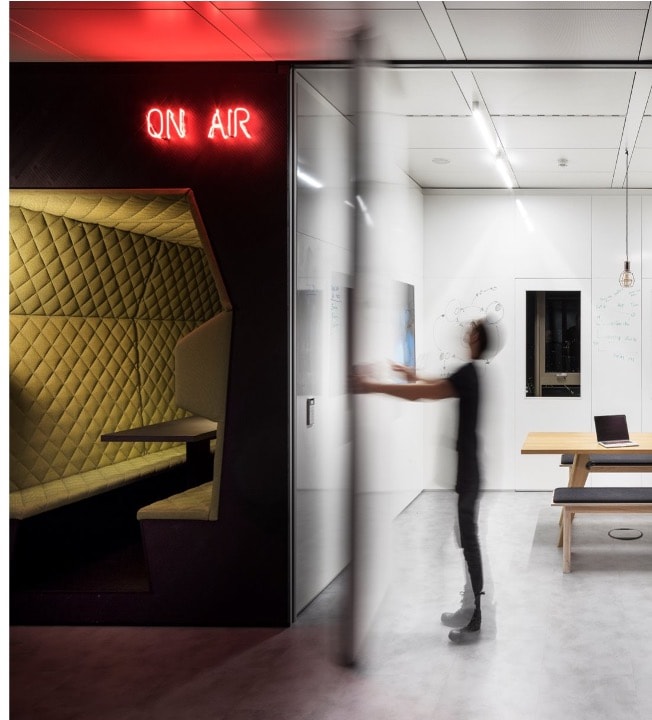
Approach
Mapping interaction zones
We visualized the spatial zones where human and vehicle perception overlap.
Each zone represents a distinct layer of awareness — from immediate proximity to distant anticipation.
The framework became a tool for thinking about attention, safety, and empathy across scales of interaction.
Prototyping
Designing, simulating, and testing at scale
Our exploration combined conceptual system mapping with large-scale prototyping inside a secure innovation environment.
Working hands-on with full vehicles and functional mock-ups allowed us to test spatial interaction hypotheses under real conditions — light behavior, sensor response, and user perception.
The process was iterative and experimental, bridging digital simulation and physical experience to refine how vehicles communicate through their surroundings.

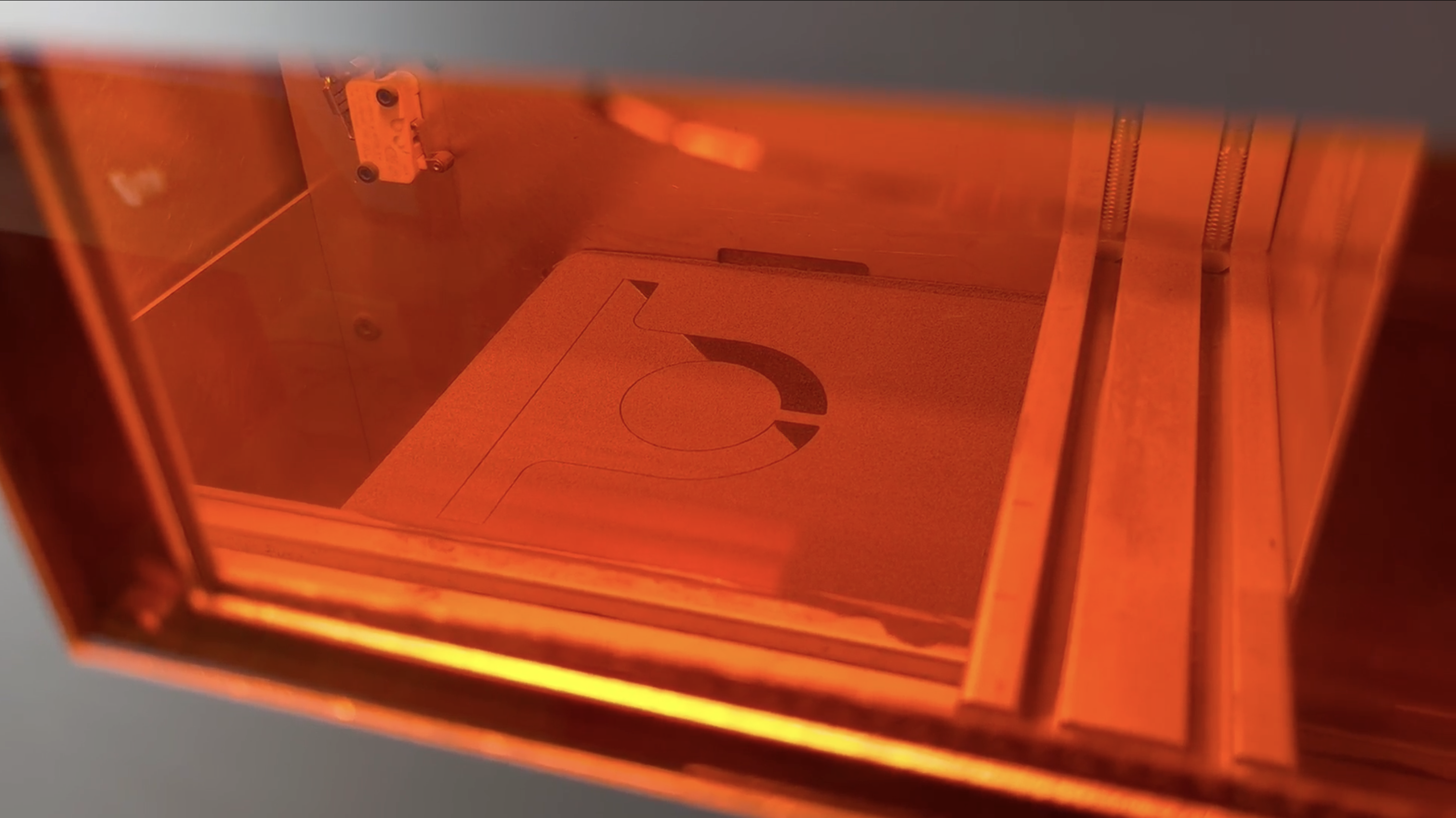

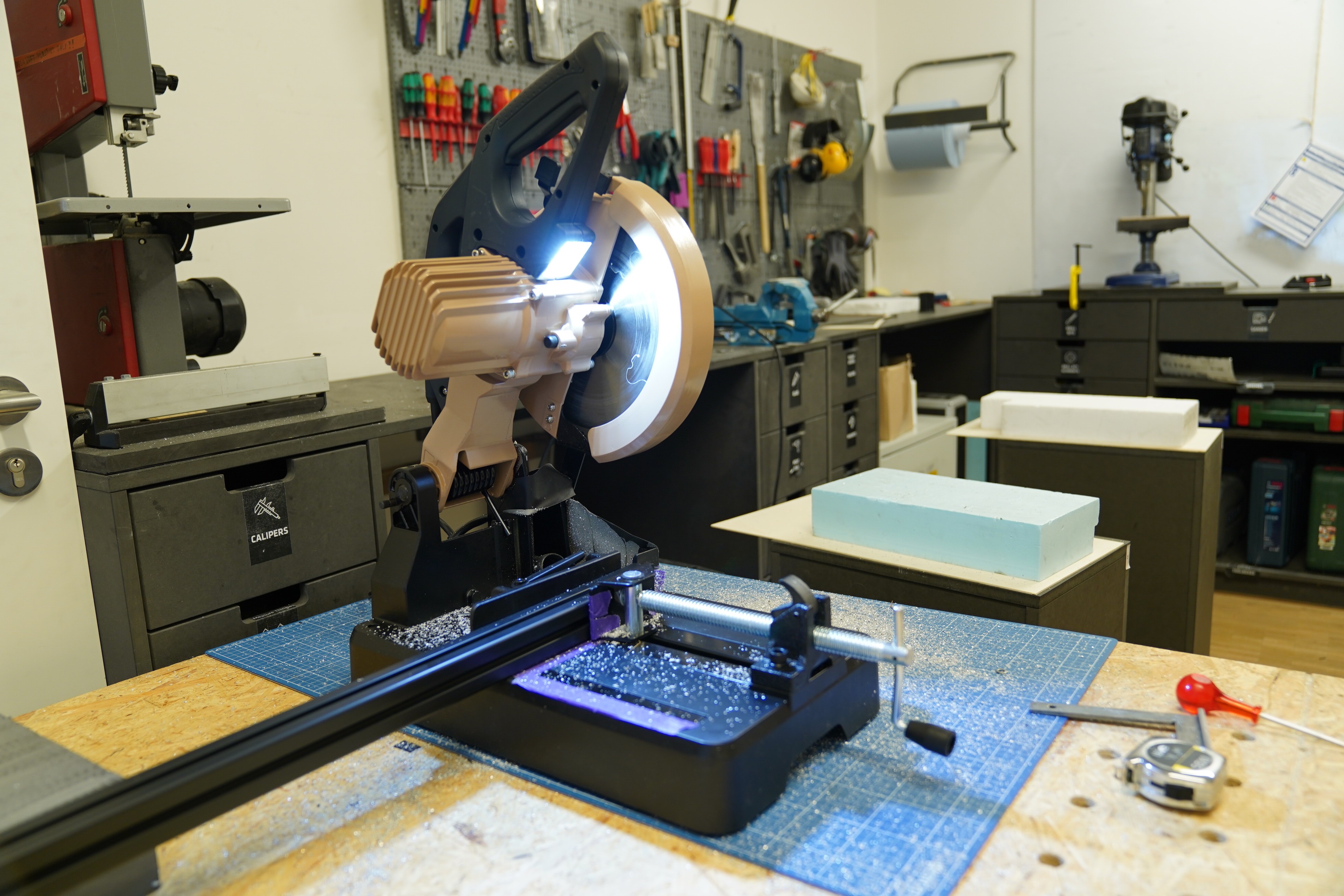


Outcome
From input to intuition
Through rapid prototyping and behavioral simulation, we demonstrated how minimal signals can create intuitive exchanges between human and vehicle.
The framework provided a foundation for designing ambient communication systems — not through screens or voice, but through light, motion, and presence.
The approach shifted focus from control to collaboration, redefining the vehicle as a responsive partner in shared space.
→
previous project
next project
→
© 2025 Lukas Loscher. All rights reserved.
How might we redefine human–vehicle interaction beyond screens and buttons?
Experience Design — Automotive
We explored new ways for vehicles to communicate with people in and around them — without adding new devices or screens.
Through light, motion, and sensor behavior, we investigated how subtle environmental cues can create awareness, anticipation, and trust in shared spaces.
Spatial UX • Interaction Modeling • Prototyping & Testing
Experience Designer — 6 months
Context
Designing spatial awareness
Modern vehicles are surrounded by increasingly complex sensor systems, yet their communication with drivers and bystanders remains limited.
The challenge was to explore how existing sensors and light sources could form a new interaction language — one that enhances awareness and connection rather than adding cognitive load.
Our goal was not to build new interfaces but to orchestrate subtle, ambient exchanges between human and machine.





Approach
Mapping interaction zones around the vehicle
We visualized the spatial zones where human and vehicle perception overlap.
Each zone represents a distinct layer of awareness — from immediate proximity to distant anticipation.
The framework became a tool for thinking about attention, safety, and empathy across scales of interaction.
Prototyping
Designing, simulating, and testing at scale
Our exploration combined conceptual system mapping with large-scale prototyping inside a secure innovation environment.
Working hands-on with full vehicles and functional mock-ups allowed us to test spatial interaction hypotheses under real conditions — light behavior, sensor response, and user perception.
The process was iterative and experimental, bridging digital simulation and physical experience to refine how vehicles communicate through their surroundings.






Interaction Testing
Abstracting behavior through motion
To explore how movement, proximity, and response shape perception, we built small, interactive studies.
Each prototype isolates one behavioral principle — reaction to speed, position, and trajectory — translating them into visual and temporal feedback.
These abstractions reflect how interaction patterns can emerge from minimal cues and evolve dynamically over time.
Speed → Response
Position → Awareness
Path → Memory
Outcome
From input to intuition
Through rapid prototyping and behavioral simulation, we demonstrated how minimal signals can create intuitive exchanges between human and vehicle.
The framework provided a foundation for designing ambient communication systems — not through screens or voice, but through light, motion, and presence.
The approach shifted focus from control to collaboration, redefining the vehicle as a responsive partner in shared space.
→
previous project
next project
→
© 2025 Lukas Loscher. All rights reserved.